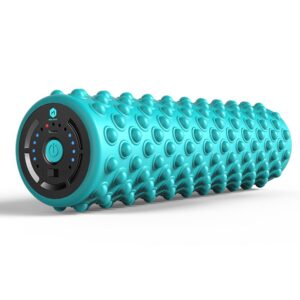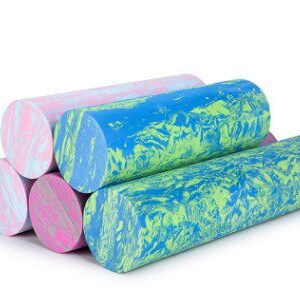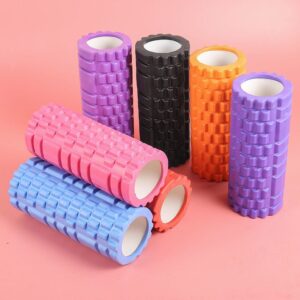Foam rollers
Foam rollers help ease muscle pain, remove knots, and reduce tension. They can improve balance, flexibility, and core strength before and after exercise.
Our sports foam rollers can improve muscle recovery speed. Shop our smaller sized travel foam rollers to keep your muscles healthy even when you’re on the move.
-
 Vibrating Foam Roller£59.99
Vibrating Foam Roller£59.99 -
 Camouflage Foam Roller£21.99 – £25.99
Camouflage Foam Roller£21.99 – £25.99 -
 Travel Foam Roller£17.99
Travel Foam Roller£17.99 -
 Yoga Foam Roller£17.99
Yoga Foam Roller£17.99
Foam Roller FAQs
Foam rollers offer various benefits for your body. Firstly, they help in relieving muscle tightness and soreness after workouts. Secondly, they improve flexibility by targeting trigger points. Thirdly, they enhance blood circulation, aiding in muscle recovery.
Additionally, foam rolling can reduce the risk of injuries by promoting better mobility and range of motion. Moreover, they are versatile and can be used for various muscle groups. Foam rollers are portable, making them convenient for home or gym use. Lastly, they're cost-effective compared to other recovery tools. Incorporating foam rolling into your routine can lead to better overall fitness and well-being.
Choosing between a hard or soft foam roller depends on personal preference and needs. Hard foam rollers provide deeper tissue massage, ideal for experienced users and those needing intense pressure for muscle relief. They effectively target stubborn knots and tight muscles but may be uncomfortable for beginners. Soft foam rollers offer gentler pressure, suitable for beginners or individuals with sensitive muscles. They provide a more cushioned experience and are easier to use initially. Soft rollers are versatile for general muscle maintenance and can be more forgiving during use. Ultimately, the choice between hard and soft foam rollers depends on individual comfort and desired intensity.
The frequency of foam rolling can vary depending on individual factors such as fitness level, activity level, and specific goals. Generally, using a foam roller a few times per week can be beneficial for most people. This frequency allows for adequate muscle recovery and maintenance without overdoing it. However, if you have specific muscle tightness or soreness, you may benefit from using a foam roller more frequently, perhaps daily or every other day. On the other hand, if you're new to foam rolling or have sensitive muscles, starting with once or twice a week and gradually increasing frequency as your body adapts may be more suitable. Listen to your body's feedback and adjust your foam rolling routine accordingly to find the right balance for you. Consulting with a fitness professional or physical therapist can also provide personalized recommendations based on your individual needs and goals.
Yes, it's generally okay to foam roll your back, but it's essential to do so with caution and proper technique to avoid injury. Foam rolling can help alleviate muscle tension and improve flexibility in the back, especially in areas prone to tightness like the upper back and lower back. However, when foam rolling the back, it's crucial to avoid rolling directly over the spine and any bony protrusions. Instead, focus on rolling the muscles on either side of the spine, such as the erector spinal muscles. Use slow, controlled movements and adjust the pressure as needed to ensure a comfortable and effective foam rolling experience. If you have any existing back conditions or concerns, it's advisable to consult with a healthcare professional before incorporating foam rolling into your routine.